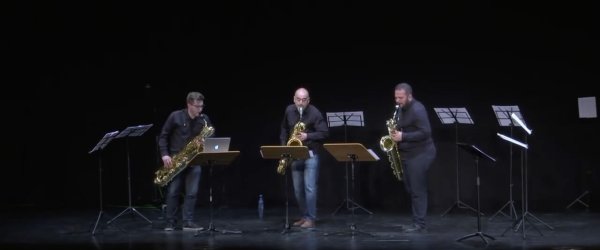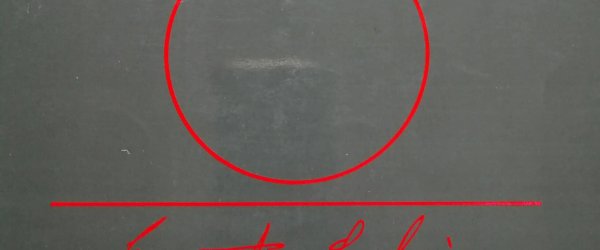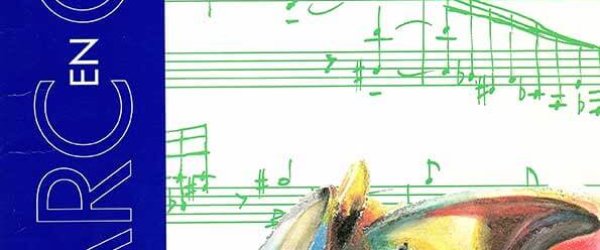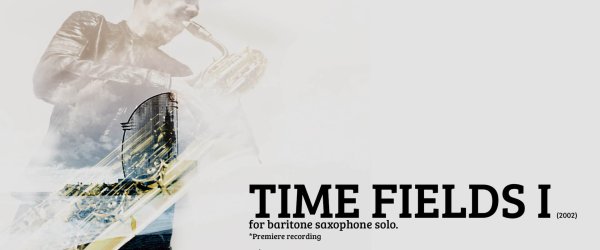
Cover of the album BELIEVER (INS Records 01, 2015), which contains “Believer” by Jacob TV
BELIEVER is much more than an interesting work for baritone saxophone and electronics. The commitment of the composer with subjects of our day to day in the Western society is undeniable.
The Composer
JACOB TV (Jacob ter Veldhuis, The Netherlands, 1951) is nowadays one of the most performed European composers. He started as a rock musician and studied composition and electronic music at the Groningen Conservatoire. His music is a kind of fusion of different styles, which includes very critical comments on some present-day subjects. The self-proclaimed “avant-pop composer” Jacob TV has successfully connected with all kinds of audiences.
Click here to read more about the composer.
Details of the work
Publisher: Donemus Publishing (NDL) / Boombox Holland, Doorn – Jacob TV online store
Duration: Around 7:20
Range (written): Bb2 – Eb6
TECHNIQUES: Bisbigliando. Flatter. Wide range of dynamics and timbres. Intonation. Tonguing accuracy. Diversity of articulations and vibratos. Slaps. Mouth ram. Some altissimo register. Bend. Growl.
PERFORMANCE: Playing with intensity and dramatism by creating a disturbing atmosphere.
Meaning and Structure of Believer
After having played PIMPIN’ many times, I wanted to discover this other work for baritone saxophone by Jacob TV. The Dutch baritone saxophone player Willem van Merwijk (to whom was composed) told me about BELIEVER and this made me eager to work on it. Some years later, I recorded it on my first solo album.
BELIEVER is a deep and intense work. The piece and is based on a Christmas interview by Bill O’Reilly with President George Bush for Fox News in 2004, about the military invasion of Iraq by the USA Army in 2003. Although it describes a specific moment of the recent history, this subject can be unfortunately extrapolated to other situations with different protagonists, nowadays.
Although BELIEVER contains some non-easy technical elements (intonation of the altissimo register, wide slur intervals, fast excerpts with slaps, etc), the work is much more demanding in terms of expression. In my opinion, the quality of sound and the playing expressivity, by adding the vibratos, portamenti and growl, etc. are fundamental.
Try to adapt the sound palette of your baritone according to the colours of the voices, the electric guitar and the cello. The composer added some very suggestive indications: “bleeding soaring sound”, “dolce doloroso”, “cry like a dying animal”, “sentimental”, etc. The lyrics and the sound atmosphere will help you to find the best character to each moment. Jacob TV told me this about my version on my album Believer (INS Records, 2015):
“(…) To tell you the truth, I was very moved by Believer, your playing is very intense, raw, bluesy, but also sweet (…)”
The score has often four staves: the first one contains the voice and lyrics, the second the baritone saxophone part and the two below are for the harmony. This guide is really helpful, since the audio has no beats and the rhythms are no always clear due to the large reverberation of the audio. When I was working on it, Jacob TV suggested me to let myself flow by the music.
As usual, Jacob TV suggests to allow the audience to follow the text (or lyrics) of his pieces. I think that an excellent way to perform BELIEVER live is with this amazing video by Robert Sirvent. It contains the full text and stunning images that describe the idea of the work very well. You should pay a little bit more for this option, but it really worth. Watch it here:
—
Would you like to know more about BELIEVER by Jacob TV? Would you like to work on it with me? Don’t hesitate to contact me for more questions.
Joan Martí-Frasquier
Barcelona, November 2017
Update: May 2025





